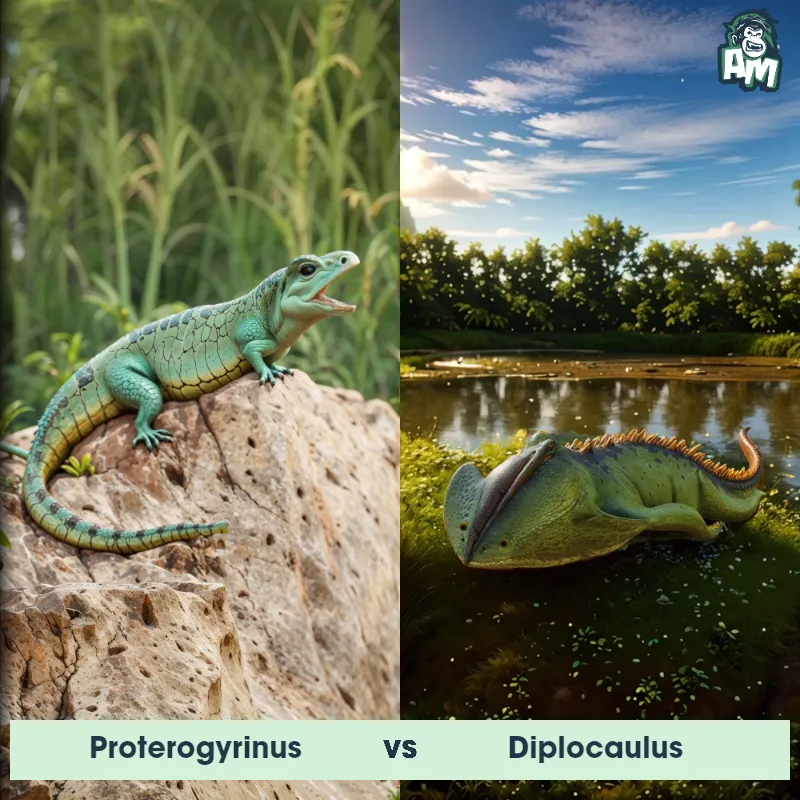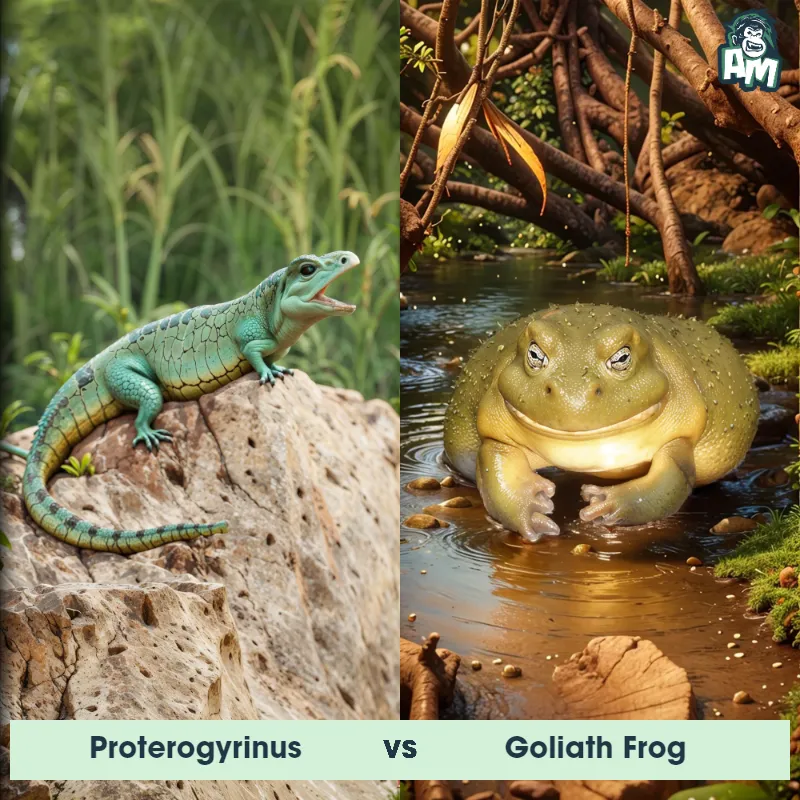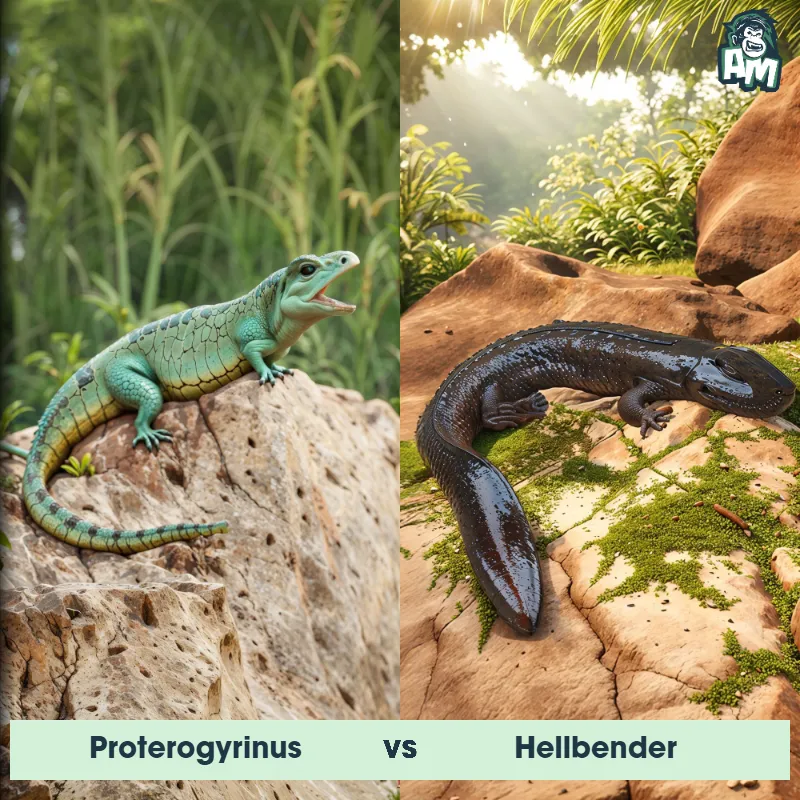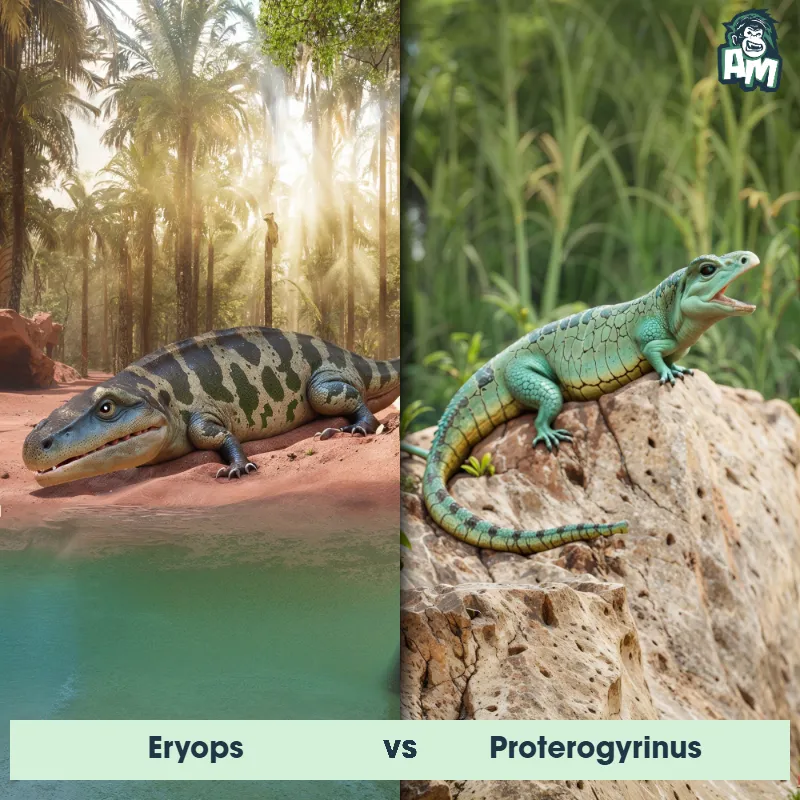The Proterogyrinus
Proterogyrinus, also known as the "Early Gyrinus," was a large amphibian that lived during the Carboniferous period. It had a long, slender body with four strong legs and a broad head. Proterogyrinus had sharp teeth for catching fish, its main prey, and was one of the first vertebrates to adapt to life on land.
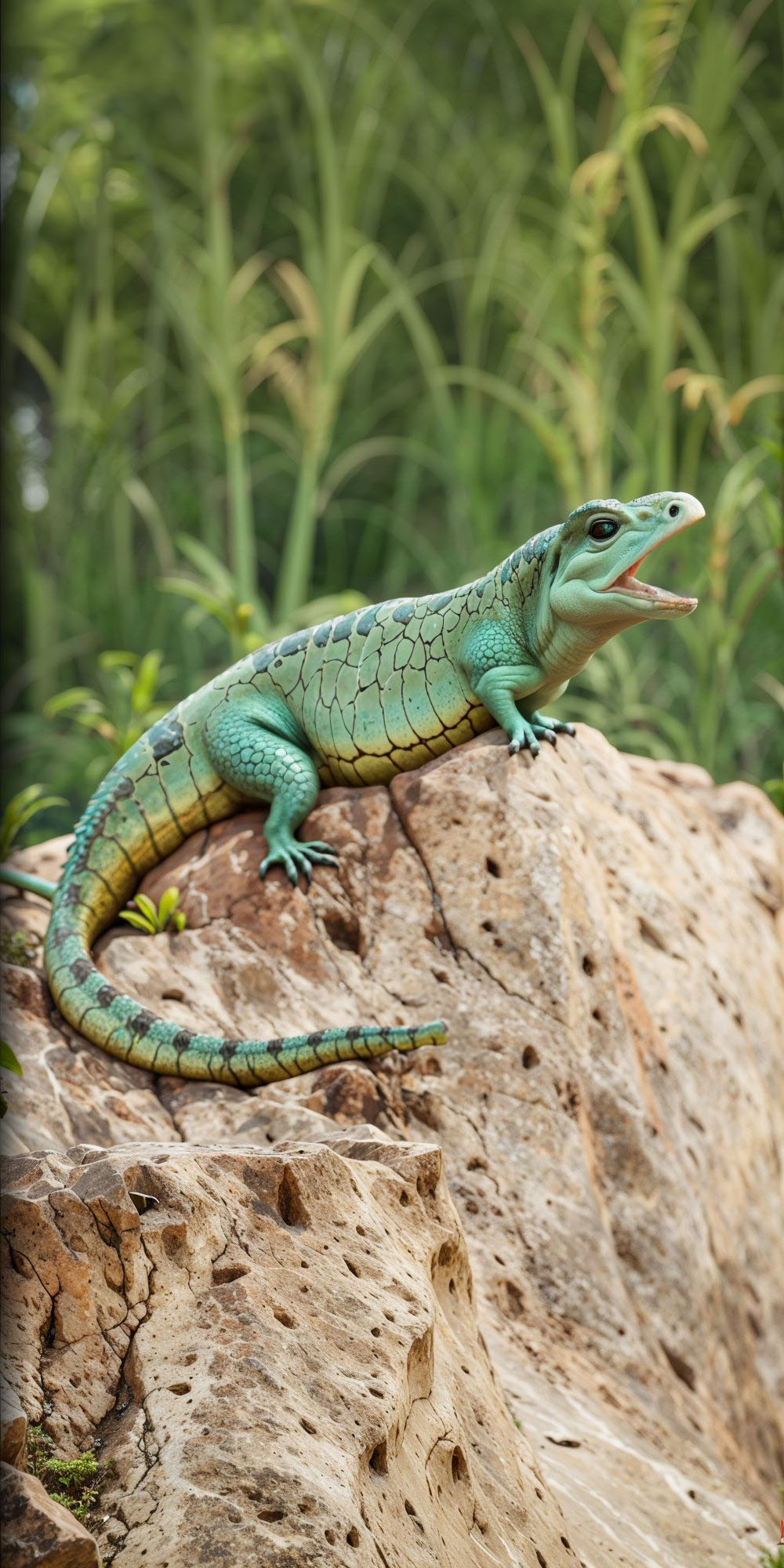
| Proterogyrinus | |
|---|---|
| Size | 3 feet (0.9 meters) |
| Weight | 20 pounds (9 kilograms) |
| Speed | 15mph (24km/h) |
| Key Strength | Powerful jaws |
| Biggest Weakness | Slowness on land |
| Scientific Name | Proterogyrinus |
| Family | Proterogyrinidae |
| Habitat | Swamps, Shallow Waters |
| Geography | North America, Europe |
| Diet | Small fish, Invertebrates |
| Lifespan | 10 years - 15 years |

The Proterogyrinus
Proterogyrinus, also known as the "Early Gyrinus," was a large amphibian that lived during the Carboniferous period. It had a long, slender body with four strong legs and a broad head. Proterogyrinus had sharp teeth for catching fish, its main prey, and was one of the first vertebrates to adapt to life on land.
Fun Fact: The name "Proterogyrinus" means "before Gyrinus," which reflects its evolutionary significance as an early land-dwelling amphibian.
| Proterogyrinus | |
|---|---|
| Size | 3 feet (0.9 meters) |
| Weight | 20 pounds (9 kilograms) |
| Speed | 15mph (24km/h) |
| Key Strength | Powerful jaws |
| Biggest Weakness | Slowness on land |
| Scientific Name | Proterogyrinus |
| Family | Proterogyrinidae |
| Habitat | Swamps, Shallow Waters |
| Geography | North America, Europe |
| Diet | Small fish, Invertebrates |
| Lifespan | 10 years - 15 years |
Proterogyrinus Matchups
We use AI to simulate matchups between the Proterogyrinus and other animals. Our simulation considers size, strength, and natural predatory behaviors to determine the most likely outcome.
Proterogyrinus: Diet, Predators, Aggression, and Defensive Behaviors
What do Proterogyrinus eat?
Proterogyrinus, an extinct genus of large amphibians, likely fed on a diet of fish, small vertebrates, and possibly insects. Their large size and robust jaws suggest they were capable of capturing and consuming a variety of prey in their aquatic habitats.
Do Proterogyrinus have any predators?
Being apex predators themselves during their time in the Carboniferous period, Proterogyrinus likely had few natural predators. However, larger carnivorous amphibians or early reptiles may have posed a threat to younger or smaller individuals.
Are Proterogyrinus aggressive?
Proterogyrinus are believed to have been ambush predators, patiently waiting for prey to come within striking range. While they may have exhibited aggression during feeding or territorial disputes, their behavior likely consisted more of stealth and patience than overt aggression.
Do Proterogyrinus fight?
While there is no direct evidence of Proterogyrinus engaging in physical combat, it is possible that they may have fought each other for control of territories or mates. Their robust bodies and powerful jaws suggest they were well-equipped for potential conflicts within their species.
How do Proterogyrinus defend themselves?
Proterogyrinus likely relied on their size and strength as their primary means of defense. Their powerful jaws and agility in water would have allowed them to evade potential threats or predators. Additionally, their armored skulls may have offered some protection from attacks.
What is Proterogyrinus' biggest weakness in a fight?
Despite their formidable size and strength, Proterogyrinus' reliance on their aquatic habitat may have been a vulnerability in a fight. Due to their large size and likely slower movement on land, they may have been at a disadvantage if forced to confront a terrestrial predator outside of the water.
Fun Fact: Despite being an amphibian, Proterogyrinus had adaptations that allowed it to spend more time on land than in water, marking an important transition in vertebrate evolution.
Fun Fact: Proterogyrinus is considered a key link between the early tetrapods that lived in water and later land-dwelling vertebrates, showing the gradual transition from aquatic to terrestrial lifestyles.



